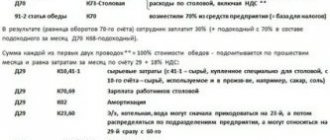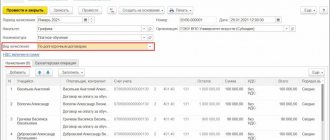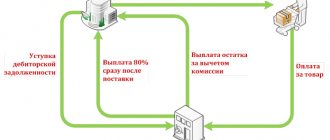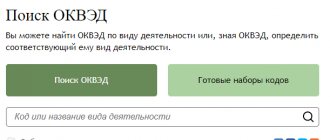Rates and calculation procedure
The tax period for calculating insurance premiums is the calendar year. Social insurance payments are calculated separately for each employee. The basis for the calculation is all accruals to the employee accrued from the beginning of the year and related to the performance of his job duties.
Calculate the amount due monthly as follows:
Tariffs for fees to extra-budgetary funds are established by Article 426 of the Tax Code of the Russian Federation. For social contributions for pension insurance and in case of temporary disability, tax base limits have been established. They are reviewed annually and established by the Government of the Russian Federation. Above this, social insurance contributions are not paid, and pension contributions are paid at a reduced rate.
Insurance premium rates
| Insurance type | Tariff, % | Maximum base 2022 (Government Decree No. 1378 dated November 15, 2017) | Tariff for an amount exceeding the limit |
| SS in case of VNiM | 2,9 | 815 000 | No |
| OPS | 22 | 1 021 000 | 10 % |
| Compulsory medical insurance | 5,1 | There is no maximum base, payments are calculated from all income for the billing period | |
Tariffs for payments for social protection against industrial accidents and occupational diseases are established by the Social Insurance Fund depending on the type of activity of the company. To do this, it is necessary to annually confirm the main type of activity. The rate can vary from 0.2 to 8.5%. If you do not confirm the main type of activity by submitting an application in the form established by Order of the Ministry of Health and Social Development dated January 31, 2006 No. 55, then the Social Insurance Fund will set the maximum possible tariff based on the types of activities of the company listed in the Unified State Register of Legal Entities.
Accounting for social insurance and security payments
Any employer, be it a company or an individual entrepreneur, if it has employees, is obliged not only to pay them wages, but also to incur a set of additional costs associated with mandatory payments for social insurance and employee benefits. Accounting for such expenses will be discussed in this article.
Social insurance calculations
Expenses for compulsory insurance of employees include contributions to the Pension Fund, Medical Insurance Fund and Social Insurance Fund. From the name of these authorities, it is generally clear that contributions to the Pension Fund of the Russian Federation affect the employee’s future pension, medical contributions finance mandatory compulsory medical insurance programs, and contributions to the Social Insurance Fund enable the employee, under an employment contract, to claim payment for a period of illness or, for example, vacation in connection with pregnancy and childbirth or child care at the expense of the employer. The rates at which contributions to the funds are paid are accepted at the following level for most employers:
- contributions to the Pension Fund – 22%,
- contributions to the Compulsory Medical Insurance Fund – 5.1%,
- contributions to the Social Insurance Fund in case of temporary disability and in connection with maternity – 2.9%.
All of them are established by Federal Law of July 24, 2009 No. 212-FZ.
In addition, on the basis of Federal Law No. 125-FZ of July 24, 1998, firms and individual entrepreneurs are required to make contributions to the Social Insurance Fund for compulsory social insurance against industrial accidents and occupational diseases. The rate on such contributions ranges from 0.2% to 8.5%, depending on the specific type of activity carried out by the employer and the associated professional risk class. The relationship between the class of professional risk and the insurance tariff is established by Article 1 of the Federal Law of December 22, 2005 No. 179-FZ. The level of risk and the corresponding rate of contributions for injuries are annually confirmed by employers in the Social Insurance Fund based on the most profitable type of activity based on the results of the past year.
All contributions are calculated based on the specific salary calculated for the employee at the end of the month.
Accounting for social insurance and security payments
Organizations that are required to maintain accounting records social insurance calculations in account 69 of the Chart of Accounts. It, in turn, is divided into subaccounts:
- 69.1 — Calculations for insurance premiums credited to the Social Insurance Fund,
- 69.2 — Calculations for insurance premiums credited to the Pension Fund of Russia,
- 69.3 — Calculations for insurance premiums credited to the FFOMS,
- 69.11 – Calculations for compulsory social insurance against industrial accidents and occupational diseases.
The accrual of contributions is reflected on the credit side of these accounts, and on the debit side they correspond with cost accounts on which the company’s total monthly expenses for production or sales are calculated, i.e. 20,25, 26, 44. When paying the accrued amount, the credit balance for each of these accounts is written off through the debit of the same account in correspondence with account 51 - Current account, and thus the debt to the funds is reset to zero.
Example:
The wages accrued to employees of Alpha LLC in July 2016 amounted to 100,000 rubles. In this regard, the accountant will make the following entries in accounting:
D.20 (or 26.44, etc.) – K. 70 – 100,000 rubles – wages accrued,
D.20 – K. 69.1 – 2900 rubles – social insurance contributions to the Social Insurance Fund have been accrued,
D.20 - To 69.2 - 22,000 rubles - contributions have been accrued for the insurance part of the labor pension in the Pension Fund of the Russian Federation,
D.20. — By 69.3 – 5100 rubles – contributions to the Compulsory Medical Insurance Fund are accrued,
D.20. - By November 69 - 200 rubles - contributions to the Social Insurance Fund for injuries have been accrued.
Further, the payment of wages and the transfer of contributions is reflected in the following transactions:
D.70 - K.68.1 - 13,000 rubles - personal income tax withheld from employees’ salaries,
D.70 – K.51 – 87,000 rubles – wages paid to employees,
D. 68.1 – K.51 – 13,000 rubles – personal income tax withheld from employees’ wages is listed.
D. 69.1 – K.51 – 2900 rubles – social insurance contributions to the Social Insurance Fund have been paid,
D. 69.2 - K.51 - 22,000 rubles - contributions have been paid for the insurance part of the labor pension to the Pension Fund of the Russian Federation,
D. 69.3 – K.51 – 5100 rubles – contributions to the Compulsory Medical Insurance Fund have been paid,
D. 69.11 – K.51 – 200 rubles – contributions to the Social Insurance Fund for injuries have been paid.
Individual entrepreneurs do not keep accounting records, but they carry out social insurance calculations according to the same principle - calculating contributions monthly, broken down into separate payments transferred to each fund.
Deadlines for payment of contributions and reporting for social insurance
Payment of accrued contributions must be made by the 15th day of the month following the billing month. And here it must be said that there is no such recipient of payments as a medical fund. The manager of contributions to the Compulsory Medical Insurance Fund is the Pension Fund of the Russian Federation, that is, it is to the Pension Fund that both the pension contributions themselves and medical contributions are transferred. In total, two separate payments in favor of the Pension Fund, and two more - for regular social insurance and for injuries - to the Social Insurance Fund. When transferring contributions, it is important to indicate the registration number of the employer in the purpose of payment, respectively in the Pension Fund and in the Social Insurance Fund. An important point: companies are assigned these numbers by default within a month after registration, but individual entrepreneurs receive them only after registering with the funds as an employer. And here you need to understand that by this time the entrepreneur already has a personal registration number with the Pension Fund of Russia - using it he pays his own fixed contributions. But when paying contributions for employees, you must indicate exactly the registration number in the pension fund that is assigned to it as an individual entrepreneur with employees, and not your own.
The same registration numbers in the Pension Fund and the Social Insurance Fund are required to be indicated when preparing reports. It is submitted to the funds based on the results of the quarter, half-year, 9 months and year, that is, indicators on wages and accrued contributions are indicated in it on an accrual basis. Both organizations and individual entrepreneurs have uniform reporting deadlines, as well as their forms themselves.
The social insurance report is submitted in Form 4-FSS, approved by Order No. 59 of the Federal Social Insurance Fund of Russia dated February 26, 2015. In paper form, it is submitted by the 20th day of the month following the end of the quarter. Those who report via electronic communication channels are given an extra 5 days to prepare - they can submit the report until the 25th of the month after the end of the quarter.
Reporting to the Pension Fund in the form RSV-1 of the Pension Fund (approved by Resolution of the Pension Fund of January 16, 2014 No. 2p) includes data on accrued and paid pension contributions and contributions to the Compulsory Medical Insurance Fund.
It is submitted on paper by the 15th day of every second month at the end of the quarter, that is, by May 15, August 15, November 15, February 15. Again, the deadline for filing reports in paper form is somewhat reduced. You must send your pension report electronically by the 20th day of the second month following the reporting quarter. You can find more complete information on the topic in ConsultantPlus. Free trial access to the system for 2 days.
Accounting
Accounting for settlements for social insurance and security, according to the chart of accounts (Order of the Ministry of Finance dated October 31, 2000 No. 94n), is kept on account 69. To organize the division of accounting by type of payment, subaccounts are opened to the account to account for settlements for:
- social insurance;
- pension provision;
- compulsory health insurance;
- contributions for injuries.
The credit of the account reflects the amounts accrued for payment, the debit - the amounts paid to the budget, as well as the amounts of social benefits by which the amount payable can be reduced in accordance with clause 2 of Art. 431 Tax Code of the Russian Federation.
| Operation | Debit | Credit |
| Accrued wages, vacation pay | 20, 25, 26, 44 | 70 |
| Insurance premiums accrued | 20, 25, 26, 44 | 69 |
| Payments accrued on certificates of incapacity for work | 69 | 70 |
| Social insurance payments transferred | 69 | 51 |
Postings to account “69.11”
By debit
| Debit | Credit | Content | Document |
| 69.11 | 51 | Transfer of funds from the organization's current account to pay off debt to the budget for settlements under compulsory social insurance against industrial accidents and occupational diseases | Debiting from current account |
| 69.11 | 70 | Accrual of payments to employees of the organization for compulsory social insurance against accidents at work and occupational diseases | Payroll |
By loan
| Debit | Credit | Content | Document |
| 000 | 69.11 | Entering initial balances: expenses for compulsory social insurance against accidents at work and occupational diseases | Entering balances |
| 20.01 | 69.11 | Inclusion of compulsory social insurance against industrial accidents and occupational diseases in the costs of main production | Payroll |
| 23 | 69.11 | Inclusion in the costs of auxiliary production of expenses for compulsory social insurance against accidents at work and occupational diseases | Payroll |
| 25 | 69.11 | Write-off of compulsory social insurance against industrial accidents and occupational diseases as general production expenses | Payroll |
| 26 | 69.11 | Write-off of compulsory social insurance against industrial accidents and occupational diseases as general business expenses | Payroll |
| 29 | 69.11 | Inclusion in the expenses of service industries and farms of expenses for compulsory social insurance against accidents at work and occupational diseases | Payroll |
| 44.01 | 69.11 | Inclusion in distribution costs of expenses for compulsory social insurance against accidents at work and occupational diseases | Payroll |
| 44.02 | 69.11 | Inclusion in business expenses of expenses for compulsory social insurance against industrial accidents and occupational diseases in organizations engaged in industrial and other production activities | Payroll |
| 91.02 | 69.11 | Inclusion in other expenses not related to core activities, expenses for compulsory social insurance against industrial accidents and occupational diseases | Payroll |
Reporting
Quarterly reporting is submitted on accrued social insurance payments:
- for payments for compulsory medical insurance, compulsory medical insurance and VNiM - calculation of insurance premiums to the Federal Tax Service (by the 30th day of the month following the reporting quarter);
- for payments for injuries - to the Social Insurance Fund - form 4-FSS (by the 25th of the month following the reporting quarter, if you submit the report in electronic form, and by the 20th - on paper).
In addition, all companies using hired labor are required to submit a monthly SZV-M report and an annual SZV-STAZH report to the Pension Fund of the Russian Federation.
Cases when you need a certificate from the FSS
When making transactions, participants need to assure each other of their financial solvency and compliance with the current legislation of the Russian Federation. A document that confirms the absence of debts becomes a kind of guarantor of the legality of actions.
If written evidence is not presented, it will prove the debt status of one of the parties. Such transactions are subsequently recognized as illegal and are easily canceled. Accordingly, it is extremely difficult to later call on the violator to comply with the agreements.
A certificate of no debt will allow legal entities and individuals to confirm a positive financial profile in the following cases:
- Resolving issues related to property rights and taxes.
- Purchases or sales of real estate. For example, in order to purchase a construction project, you need to provide a letter confirming from the Social Insurance Fund that there are no debts to pay property taxes.
- Participation in government procurement, tenders and competitions.
- Negotiations with investors and partners.
- Reorganization of LLC, JSC and other organizational and legal forms of business.
- Liquidation or sale of a business.
Individual entrepreneurs and taxpayers may need to check debt on mandatory payments for reporting to the Federal Tax Service. Without a positive characteristic from social funds, it is impossible to attract investments into small and medium-sized businesses or close an individual entrepreneur.







